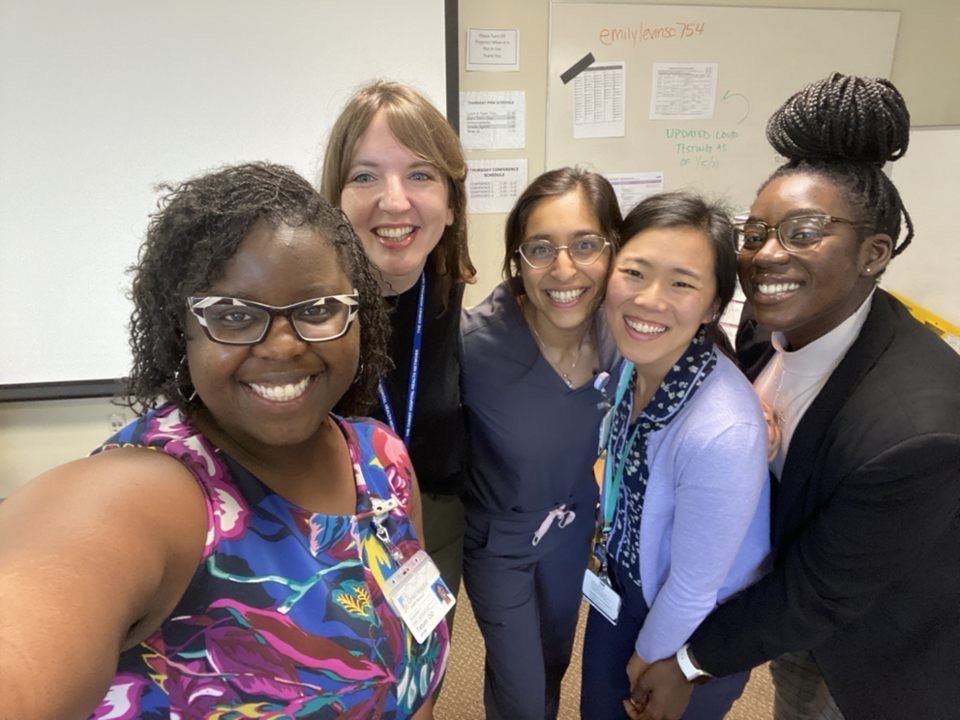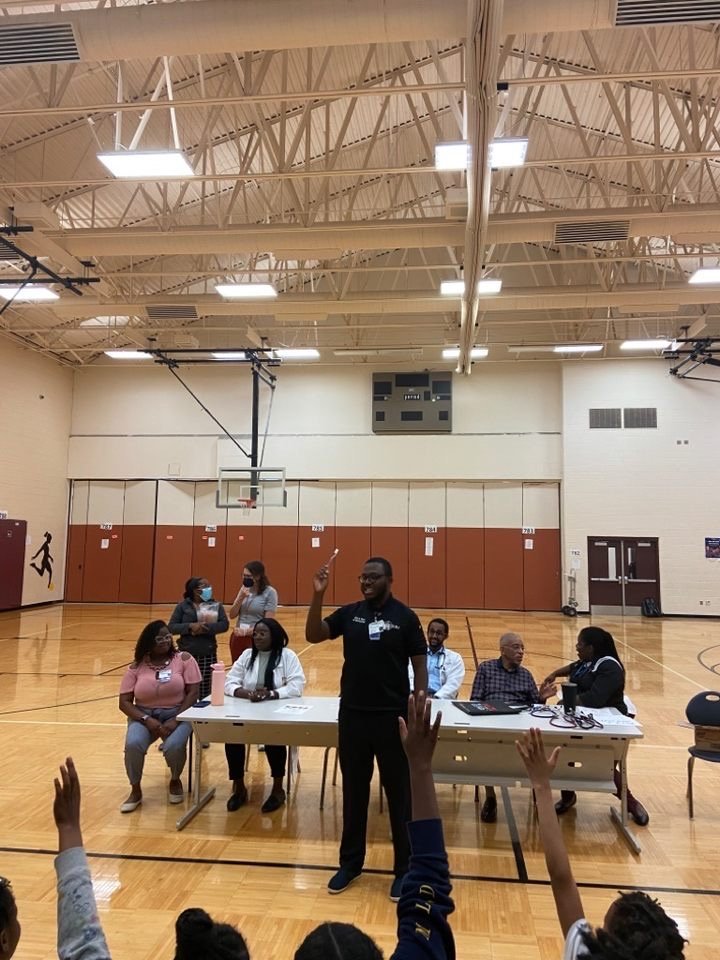YEARLY BREAKDOWN
The Clinic First Collaborative | 2x2 Curriculum | Outpatient Schedule | Team Time
Morning Teaching | Thursday Conferences | Additional Rotations
CLINIC FIRST COllaborative
As family docs, we pride ourselves on knowing our patients, their families, and what they value most in their healthcare experience. We work with our patients rather than for them. Trust is the cornerstone of these collaborative patient-physician relationships, and it can not be built without continuity of care.
The Fundamental Goals of Clinic First Collaborative
Teaching our family medicine residents to manage the responsibilities of trusting, symbiotic relationships remains a central value to our curriculum and we do it well. In an effort to do it better we, along with a handful of other esteemed institutions across the U.S., signed on to the “clinic first collaborative.” From this commitment our 2x2 curriculum was born. You can read more about the “Clinic First” model here.
2x2 Curriculum
What is a 2x2 curriculum?
“2x2” is a curriculum by which residents alternate between two weeks on an inpatient or specialty service followed by two weeks of a longitudinal outpatient experience throughout the year (example schedule below). Continuity clinics get built into the schedule exclusively during the outpatient two week blocks.
“As a new intern, the 2x2 curriculum has provided the time and structure to pause, reflect, and improve. Exposure to multiple facets of the system every two weeks helps understand how to coordinate care better. I have flexibility to schedule patients during clinic days for continuity of care.”
What are the benefits of training in a 2x2 curriculum?
Decreasing “whiplash” between dual responsibilities for an inpatient service and continuity clinic in the same day
Additional opportunities for longitudinal electives/rotations built into the outpatient 2 week blocks
Overall higher volume of time in our Family Medicine Center (putting “clinic first” as the core of our FM training), while maintaining our quality inpatient training experiences.
Additional opportunities for interdisciplinary approaches to population health through more time for patient registry management
Improved reinforcement of rotations. For example, rather than 1 month of inpatient and a long break before coming back, rotations are in shorter, more frequent bursts throughout the year, which improves burnout and solidifies learning.
Residents are in the clinic the same days all year, which improves patient scheduling and continuity in the clinic.
Much much more… reach out and ask us!
An example of what an outpatient 2 weeks might look like for interns:
*To learn more about out underserved site options, click here to visit our "Global and Underserved Page"
Longitudinal experiences ever year: FMC clinic times, FMC Team Time, Underserved site, Academic time, Conferences/Lectures
Additional longitudinal experiences first year: ENT/Ophthalmology/Addiction Medicine, Gynecology, Sports Medicine, Cardiology, “R1 Specials” (Behavioral health, procedures, global health)
What is team time?
Team time is designed to learn about population health, quality improvement, and health equity in an interactive, participatory and collaborative way, while utilizing and building upon the strengths of your FMC team-let (the half of your color team who is in the FMC during the same 2 week blocks as you are). Aside from being a wonderful team bonding experience, you will learn, among other things, to do the following:
Describe basic QI tools (process map, run chart, root cause analysis, audit, PDSA)
Describe QI methodology (model for improvement, Lean)
Utilize at least 1 tool in a QI project
Examine health inequities in Cincinnati related to DM, HTN, and smoking using geospatial mapping tools.
Create a registry of your patients and evaluate the state of their chronic conditions & preventive health.
Explore your leadership style
Much more! Check out the video below to hear what our residents love about team time!
THURSDAY AFTERNOON CONFERENCES
Every Thursday afternoon, ALL RESIDENTS have protected time to attend Thursday lectures. These lectures cover a range of topics including diabetes, HTN, CHF, CKD, behavioral health, Women’s Health, Pediatrics, social determinants of health, and much more. They are a fantastic learning opportunity and they are always highly rated by the residents. During the COVID-19 outbreak, our amazing faculty adapted these lectures to remote learning when needed and they have taken it in stride, while prioritizing in person learning in a safe manor whenever possible. Want to check out some excerpts from one of our diabetes lectures with Dr. Bernheisel?! See Below!
WHAT ARE THE ROTATIONS WHEN NOT ON OUTPATIENT?
Below is a sample schedule of Inpatient/Specialty rotations for each year (between every block will have the 2 week outpatient experience)
//Note 1 block= dedicated 2 week experience//
PGY-1:
Inpatient Adult Medicine on the Family Medicine service (4 blocks)
OB (2 blocks)
Geriatrics (1 block)
Inpatient Pediatrics at Cincinnati Children's Hospital (2 blocks)
Global Health (1 block)*
University of Cincinnati ED (1 block)
ICU (1 block)
Newborn (1 block)
General Surgery (1 block)
*GH months will be structured as one 4 week block with time in the FMC before and after a two-week trip. There will be no longitudinal components during this time, except for classroom teaching on Thursday afternoons.
PGY2
OB (2 blocks)
Inpatient Adult Medicine on the Family Medicine service (6 blocks)
Inpatient Pediatrics at Cincinnati Children’s Liberty Campus (2 blocks)
Global Health Leadership (1 block)*
Pediatric Outpatient Medicine at CCHMC clinics (1 block)
Orthopedics/Sports Med (1 block)
Longitudinal experiences throughout the PGY-2 year during outpatient blocks: Dermatology, Urgent/Acute Care, Elective, Procedures
PGY3
Inpatient Adult Medicine on the Family Medicine service (6 blocks)
Pediatric ED at Cincinnati Children’s Medical Campus (2 blocks)
Global Health (1 block)*
Orthopedics/Sports Med (1 blocks)
Emergency Medicine at TCH (1 block)
Gynecology (1 blocks)
Elective (1 block)
Longitudinal experiences throughout the PGY-3 year during outpatient blocks: Outpatient pediatrics at Crossroads FQHC, additional time at underserved site, electives












